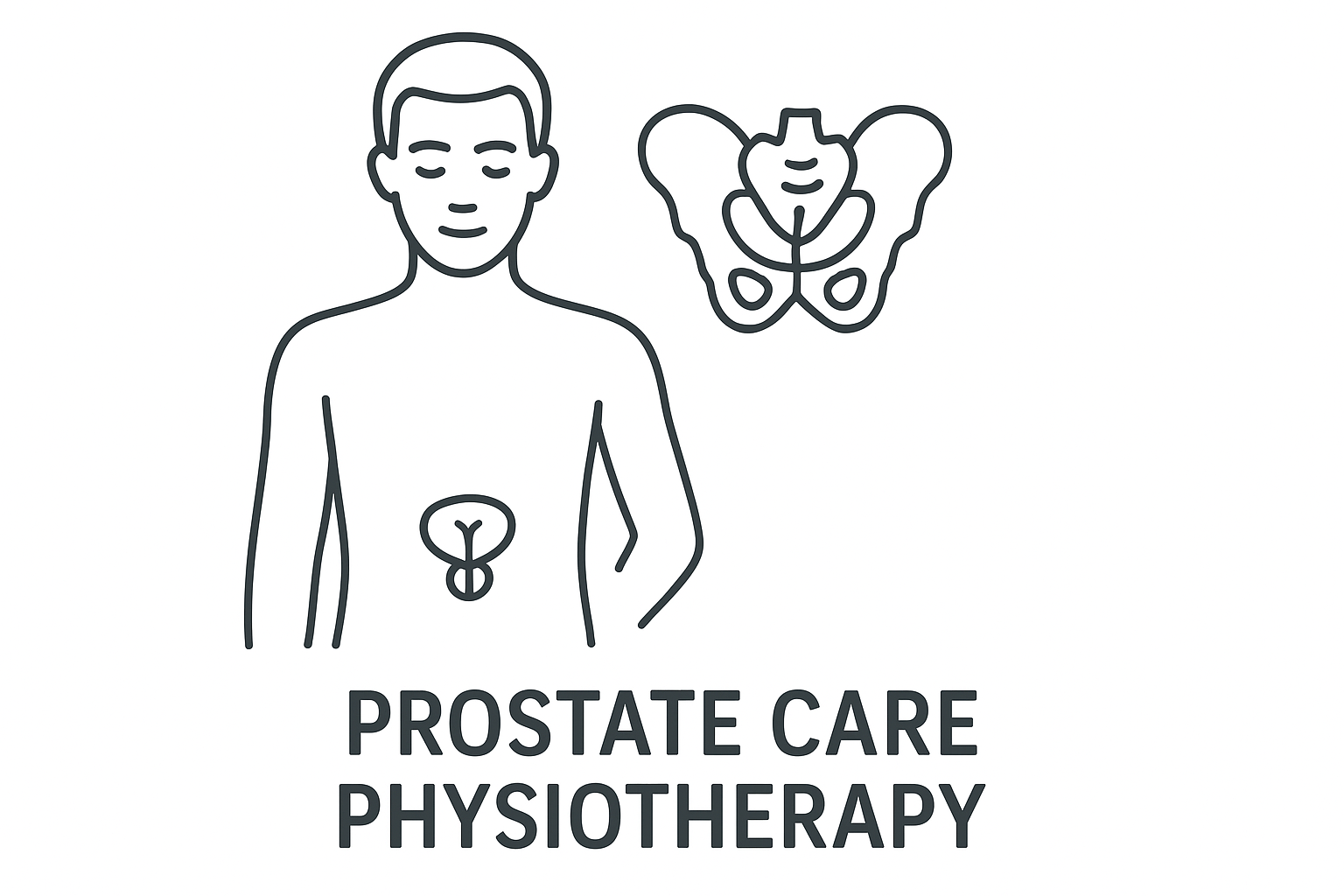Prostate Clinic
We understand that prostate issues can significantly impact men's lives. Pelvic floor physiotherapy offers a safe, evidence-based, and non-invasive path to recovery and wellbeing.
Why Pelvic Floor Care Matters for Prostate Health.
Better continence control after prostate surgery.
Prostate removal (Prostatectomy) often causes urinary leakage. Research shows pelvic floor training both before and after surgery can dramatically improve continence outcomes, with up to 94% of men regaining bladder control within 3-6 months.
Reducing urgency and frequency.
An enlarged prostate or overactive bladder can cause urinary urgency, often right after prostate surgeries or with age. Physiotherapy can ease these symptoms via bladder retraining, pelvic floor strengthening, lifestyle advice, and neuromodulation techniques (EMSELLA).
Relieving pelvic pain and prostatitis.
Chronic prostatitis or pelvic pain syndrome (CPPS) can be debilitating. Pelvic floor physiotherapy helps relieve muscle tension through manual therapy, myofascial release, coordination training and relaxation techniques, leading to reduced pain and improved bladder and bowel function.
Enhancing sexual function.
Pelvic floor muscles play a key role in erection strength, ejaculatory control, and orgasm. Exercises and neuromodulation techniques (EMSELLA) can target the muscles to help address erectile dysfunction and premature ejaculation, particularly post-prostate surgery or with age-related muscle weakening.

How can we help?
Prehabilitation and education. If you're undergoing prostate surgery, early physiotherapy can help pre-condition your pelvic muscles. This prepares you for surgery and sets you up for a faster recovery.
Targeted pelvic floor training programs can improve muscle strength, timing and coordination. Key for bladder control and pelvic support.
Bladder and bowel retraining, structured scheduling, fluid adjustments, pelvic floor activation techniques, and distraction strategies help reduce urgency and frequency symptoms.
Manual therapy and relaxation techniques such as myofascial release, trigger-point therapy and stretching can relieve pelvic floor tension and improve tissue function.
Regular monitoring and goal setting therefore your recovery is guided by periodic reviews and adjustments.

Who can benefit?
Pre-surgery optimisation - prepares pelvic floor muscles and eases post-operative pain.
Post-prostatectomy leakage - improves pelvic floor muscle control and accelerates return to continence.
Urinary urgency and frequency - retrains bladder and manages urge effectively.
Chronic prostatitis and pelvic pain - reduces muscle tension and improves pelvic coordination.
Sexual dysfunction - enhances erectile quality and ejaculatory control.
Bowel dysfunction - improves control via targeted muscle rehabilitation.

